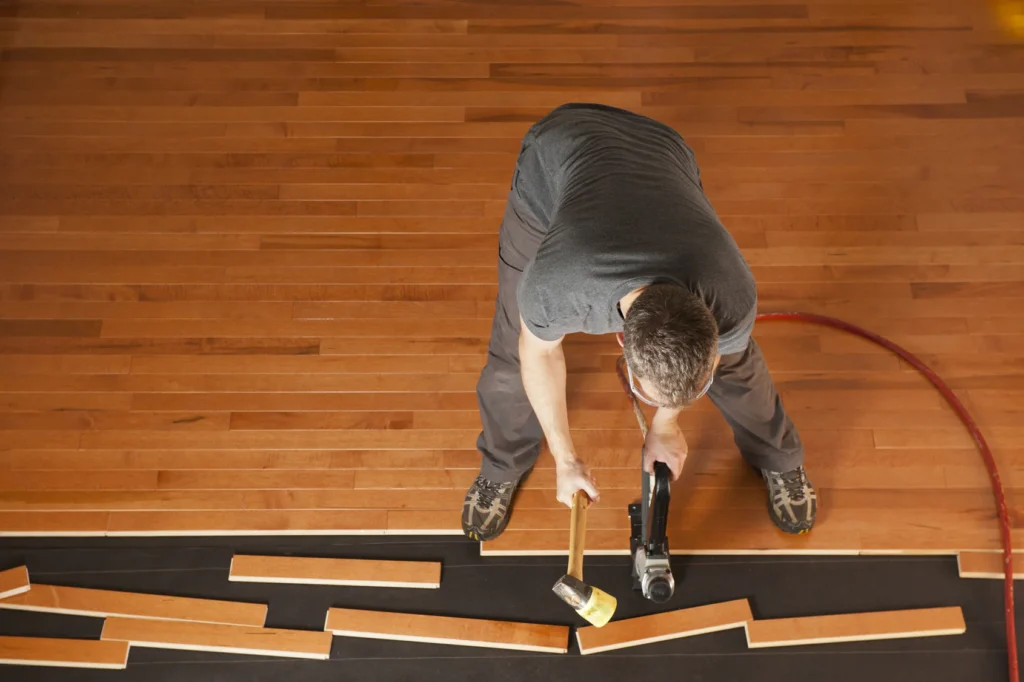Choosing the Right Installation Method for Flooring: A Comprehensive Guide
by siteadmin

Selecting the perfect flooring for your space is just the beginning of your home improvement journey. Equally important is deciding on the most suitable installation method. With a variety of options available, it’s essential to understand each method’s benefits, considerations, and compatibility with your chosen flooring material and subfloor. In this comprehensive guide, we’ll explore different installation methods for flooring and help you make an informed decision.
1. Nail-Down Installation
Nail-down installation is a traditional method commonly used for solid hardwood flooring. It involves securing individual flooring planks to the subfloor using nails or staples. This method provides exceptional stability and durability, making it ideal for high-traffic areas. However, it requires a wooden subfloor and may not be suitable for all flooring materials.
2. Glue-Down Installation
Glue-down installation involves adhering the flooring directly to the subfloor using adhesive. This method is suitable for a wide range of flooring materials, including engineered hardwood, luxury vinyl, and tile. Glue-down installation offers excellent durability and minimizes movement and noise. It’s particularly well-suited for concrete subfloors and areas prone to moisture.
3. Click-Lock Installation
Click-lock, or floating, installation is a popular choice for engineered hardwood, laminate, and luxury vinyl flooring. This method involves interlocking the flooring planks or tiles, eliminating the need for adhesive or fasteners. Click-lock installation is quick, easy, and suitable for DIY projects. It also allows for expansion and contraction, making it ideal for installations over various subfloor types.
4. Loose-Lay Installation
Loose-lay installation involves laying the flooring directly over the subfloor without adhesive or fasteners. This method is commonly used for luxury vinyl tile and plank flooring, as well as carpet tiles. Loose-lay installation is fast and straightforward, allowing for easy removal and replacement of individual tiles or planks. It’s ideal for temporary or semi-permanent installations.
5. Full-Spread Adhesive Installation
Full-spread adhesive installation is similar to glue-down installation but involves applying adhesive to the entire subfloor surface rather than just the perimeter. This method provides maximum stability and minimizes the risk of plank or tile movement. Full-spread adhesive installation is commonly used for luxury vinyl tile and plank flooring in commercial settings or areas with heavy foot traffic.
Considerations for Installation
- Subfloor Type: The type and condition of your subfloor will influence the choice of installation method. Ensure your subfloor is clean, level, and structurally sound before proceeding with installation.
- Moisture Levels: Consider the moisture levels in your environment and select an installation method that is compatible with your flooring material and subfloor type.
- DIY vs. Professional Installation: While some installation methods are suitable for DIY projects, others may require professional expertise. Evaluate your skill level and the complexity of the installation before deciding.
Choosing the right installation method for your flooring is essential for ensuring a successful and long-lasting result. Consider factors such as flooring material, subfloor type, moisture levels, and skill level when selecting an installation method. Whether you opt for nail-down, glue-down, click-lock, loose-lay, or full-spread adhesive installation, proper preparation and attention to detail will ensure a beautiful and durable floor that enhances your space for years to come.
Interested in deepening your understanding of carpentry? Here’s another relevant article just for you! Exploring Timeless Elegance
Selecting the perfect flooring for your space is just the beginning of your home improvement journey. Equally important is deciding on the most suitable installation method. With a variety of options available, it’s essential to understand each method’s benefits, considerations, and compatibility with your chosen flooring material and subfloor. In this comprehensive guide, we’ll explore…
Recent Posts
- Carpenters’ Corner: Exploring Essential Woodworking Tools and Their Uses
- Pergolas: Enhancing Outdoor Spaces and Reducing Stress
- Choosing the Right Installation Method for Flooring: A Comprehensive Guide
- Understanding Color Psychology in Flooring: Transform Your Space with the Right Hues
- Elevate Your Space: Custom Closets Embracing Design Trends and Inspirations
